
Figure 1. Flowchart of Experimental Methodology
Roads are the backbone of country's development, but the high level of emission generated in paving conventional bituminous pavements is always a major concern. For decades, Hot Mix Asphalt (HMA) had an upper hand in pavement construction all over the world. Hot mix asphalt was easy to produce, but required high temperatures to be maintained during transportation and laying. As HMA production involves high-energy consumption, production of bituminous mix with lower temperatures using different process is developed which is labeled as Warm Mix Asphalt Technology. In the present study, ZycoTherm additive, has been used in different dosages at different temperatures to prepare warm mix asphalt in the laboratory. ZycoTherm additive can be used with an optimal dosage of 0.07% by weight of bitumen at 135o C mixing temperature for WMA, and 30% RAP with 70% virgin aggregates containing 0.07% ZT WMA at 135o C, gives better stability and performance than other mixes. Hence, 30:70 is the most optimum blend. From the cost analysis, the construction cost for the 30:70 combination works out to be 9.5 lakhs per km, which shows a saving of 33.25% compared to HMA construction.
The evolution and advancements in transportation facilities have been closely linked with the advancement of technology throughout the world. Road industry has the major share in contributing towards the detrimental impact on the environment. It leads to air pollution due to emissions from the plant, increased fuel consumption due to the high mixing temperature, noise pollution, disposal of construction wastes, etc. Hence for the past few decades, globally road industry is increasingly interested in developing and adopting environment friendly technology in pavement construction. One of them is the Warm Mix Technology (WMA), which benefits in conservation of natural aggregates, cold-weather paving, aids better compaction, reduced fuel usage, reduced emissions, reuse and recycling of asphalt products, improved working conditions, and is eco-friendly. This most common method involves a process in which RAP is combined with virgin aggregate and virgin bitumen in a central mixing plant to produce new hot mix paving mixer. A second method, namely “Hot in-place recycling” involves a process in which asphalt pavement surface distress is corrected by softening the existing surface with heat, mechanically removing the pavement surface, then mixing it with a recycling or rejuvenating bituminous concrete with virgin aggregate and softer grade bitumen, such as 80/100 grade bitumen without using rejuvenator.
In this investigation, RAP to new aggregate ratio has been adopted as 40:60 and 30:70. In the laboratory, the mixing is done manually in a heating bowl which is to be heated to a temperature in the range of 155o C for HMA and at varying temperature for WMA using ZycoTherm additive. Hence the combination of RAP as a warm mix was found to be the most eco-friendly and economical.
B Harish kumar, et al. (2015) [1] conducted a study which was carried out with 5.5% OBC (Optimum Bitumen Content) and 0.1% of ZycoTherm dosage. There was an increase in stability of the WMA compared to HMA, i.e., from 1360 kg at 130o C to 2310, 2165, and 2215 kg at 100, 90, and 80o C, respectively. Usage of ZycoTherm in the WMA reduced 11 - 14% of fuel cost compared to the fuel cost of conventional HMA. The laying temperature was reduced by 20o C in WMA compared to the conventional HMA.
Rohith and Ranjitha (2013) [2] conducted a study on DBM (Dense Bituminous Macadam) – II mix to evaluate properties for conventional HMA mix prepared at 115o C, 130o C, and 155o C and WMA mix prepared at 115o C and 130o C, using 0.1% ZycoTherm as a chemical additive. The OBC values for the HMA mix at 155, 130, and 115o C were found to be 5.4, 5.2, and 5.8%, respectively, whereas for the WMA at 130 and 115o C were found to be 5.37 and 5.8%, respectively. The stability values at OBC for HMA mix at 155, 130, and 115o C were found to be 12.09, 11.10 and 8.30 kN respectively, whereas for the WMA at 130 and 115o C were found to be 11.90, and 9.20 kN, respectively. The OBC for HMA mix at 155o C and WMA at 130o C with 0.1% ZycoTherm were found to be 5.40% and 5.37%, respectively. From the study, the author concluded that 0.1% ZycoTherm at 130o C mixing temperature gives good results compared to conventional hot mix. RAP samples revealed the variability in RAP binder content and gradation.
Parveez, et al. (2014) [3] carried out laboratory studies on HMA mixes with varied RAP proportions from 10 to 40% and virgin HMA mix of BC - II layer. By their laboratory investigations, the following conclusions were drawn. The optimum Bitumen content for virgin mix was 5.3% and 4.94%, 4.52%, 4.16% & 3.78% for 10, 20, 30, and 40% RAP, respectively. Based on the Marshall properties, the BC-I 40% RAP mixes shows considerable stability and other Marshall properties with decrease in OBC. Hence, RAP mixes of 40% may not be recommended for the construction practice and restricted to 20%.
H. Ziari, M. M. Khabiri (2005) [4] investigated on the effect of bitumen content and RAP content in bituminous mixes based on Resilient Modulus which was conducted in accordance with ASTM D 4123-82. They concluded that with increasing temperature, the resilient modulus decreases due to the softening of the binder. And also the addition of RAP results in a stiffer mixture at the higher test temperatures with increased resilient modulus, i.e., addition of 40% RAP to control mixture at 25o C resulted in the increased stiffness by 74% than the normal mix.
In the first phase, comparison of Marshall Properties of BC-II as HMA and WMA mix at varying dosage of ZycoTherm and varying temperature was done. From this, an optimum dosage of ZycoTherm and effective temperature was determined. In the second phase, for optimum combination of ZycoTherm dosage and temperature, 30% and 40% of RAP material were replaced and Marshall Properties were evaluated.
Figure 1 shows the methodology which was followed during experimental studies conducted on WMA using nanotechnology compound with partial replacement of RAP in both HMA and WMA mixes of BC grade II.

Figure 1. Flowchart of Experimental Methodology
Aggregates were collected from the crusher site in Tavarekere, Bangalore and the basic tests on aggregates were conducted in the laboratory as per the specified test methods [6]. The physical properties of virgin aggregates were determined which is presented in Table 1.

Table 1. Physical Properties of Virgin Aggregates
Bitumen of VG-30 (50/70) and VG-10 (80/100) were considered for virgin bituminous mixes and RAP mixes and their physical properties are shown in Tables 2 and 3, respectively

Table 2. Physical Properties of Virgin Bitumen (VG- 30)

Table 3. Physical Properties of Virgin Bitumen (VG- 10)
ZycoTherm is one of the additives used for Warm Mix Asphalt. It allows WMA mixing and compaction temperature upto 36o C lower than traditional Hot Mix Asphalt. According to NCHRP, conditioning for 2 hours at 135o C will simulate the production temperature of bituminous mixes.
The quantity of new asphalt binder to be added to the trial mixes of the recycled HMA mixture, expressed as percent by weight of total mix is calculated by the following equation (1) [5].

where,
Pnb - New/additional bitumen content in recycled mix, %
r - Percent of new aggregates to the total aggregates used in the mix, %
Pb - Estimated Bitumen content for the trial purpose in the RAP bituminous mix, %
Psb - Bitumen content present in the RAP, %.
Evaluation of RAP is necessary because, with the aging and oxidation of binder, certain significant changes arise in HMA and it may come from different layers of HMA with different compositions constructed with materials from different origins. In case of binder, it includes hardening (increase in viscosity), loss of ductility, loss of the lighter fractions, and a corresponding increase in the proportion of the asphalt. First, RAP sample need to be broken down to uniform pieces and from this, at least 2 kg of material should be selected for extraction purpose. At least 95% of the RAP particles shall pass through a 50 mm sieve prior to mixing with the virgin materials. The aged asphalt binder must be extracted from a representative sample of RAP to determine bitumen properties [8]. The RAP materials were subjected to solvent (benzene) extraction method by centrifuge extractor as per IRC SP-11.
The result of the physical properties of virgin aggregates which lies within the specified limits of BC-II of Table 500-16 of MoRTH 5th revision is shown in Table 1.
The result of the physical properties of bitumen VG-30, which is used in the preparation of HMA and WMA mixes at varied temperatures is shown in Table 2.
The result of the physical properties of bitumen VG-10, used as a rejuvenator to soften the hardened bitumen of RAP, which is also used in the preparation of HMA and WMA mixes with RAP at varied temperatures is shown in Table 3.
The result of Blending of Virgin Aggregates by gradation to obtain job mix formula is shown in Table 4, and the obtained gradation lies within the specified limits, which is shown in Figure 2.
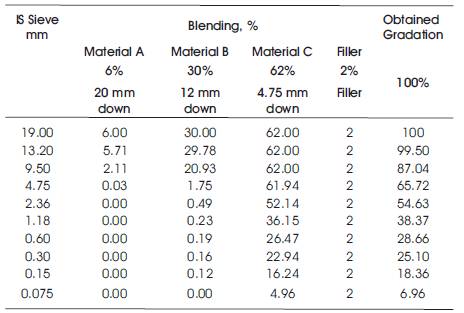
Table 4. Blending of Aggregates for Bituminous Concrete Grade-II

Figure 2. Blending Chart Virgin Aggregates
For Blending materials A, B and C, JMF (Job-Mix Formula) is given as,
A (20 mm down) : 6%
B (12 mm down) : 30%
C (6 mm down) : 62%
Filler (cement) : 2%
Table 5 shows the result of Blending of Virgin Aggregates with 30% RAP replacement for BC-II and the obtained gradation lies within the specified limits, which is shown in Figure 3.
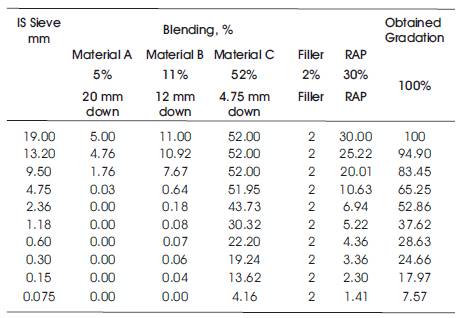
Table 5. Blending of Virgin Aggregates with 30% RAP Replacement for Bituminous Concrete Grade-II

Figure 3. Blending Chart of 30% RAP replacement with Virgin Aggregates
For Blending materials A, B, and C, JMF (Job-Mix Formula) is given as,
A (20 mm down) : 5%
B (12 mm down) : 11%
C (6 mm down) : 52%
Filler (cement) : 2%
RAP : 30%
Table 6 shows the result of Blending of Virgin Aggregates with 40% RAP replacement for BC-II and the obtained gradation lies within the specified limits, which is shown in Figure 4.

Table 6. Blending of Virgin Aggregates with 40% RAP Replacement for Bituminous Concrete Grade - II

Figure 4. Blending Chart of 40% RAP replacement with Virgin Aggregates
For Blending materials A, B, and C, JMF (Job-Mix Formula) is given as,
A (20 mm down) : 2%
B (12 mm down) : 6%
C (6 mm down) : 50%
Filler (cement) : 2%
RAP : 40%
Table 7 shows the result of the physical properties of RAP aggregates which lies within the specified limits of BC-II of Table 500-16 of MoRTH 5th revision.
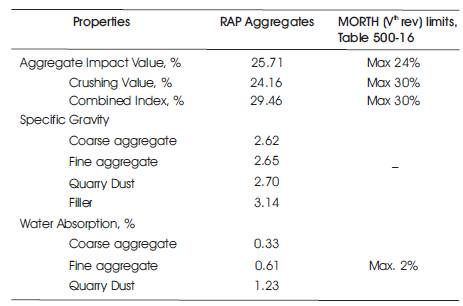
Table 7. Physical Properties of RAP Aggregates
Table 8 shows the result of the physical properties of recovered binder which was extracted from RAP sample.
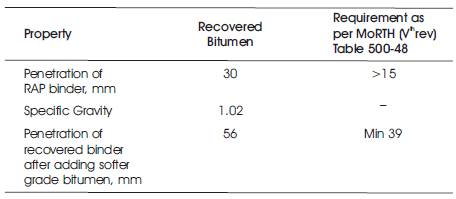
Table 8. Properties of Recovered Binder
Table 9 shows the estimation of new binder content of RAP mix calculated by using equation (1).
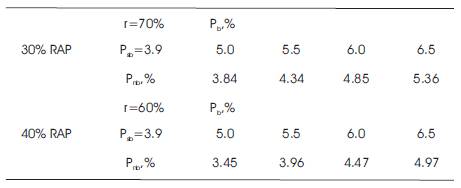
Table 9. New Binder Calculation for RAP Mix
Table 10 shows the Marshall test results of BC-II mixes of HMA at 155o C, WMA containing ZycoTherm doses (0.07% and 0.1%) at 135o C and 125o C, respectively. It was concluded that 0.07% optimum usage of ZycoTherm at 135o C effective temperature is suitable for WMA mixes.
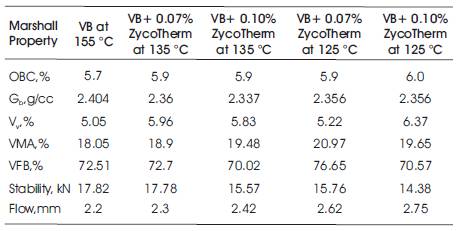
Table 10. Marshall Test Results for Different Trail Mixes
Table 11 shows the Marshall test results of 30% and 40% partial replacement of RAP in BC-II mixes of HMA and WMA (0.07% ZycoTherm dosage) at 155o C and 135o C, respectively.
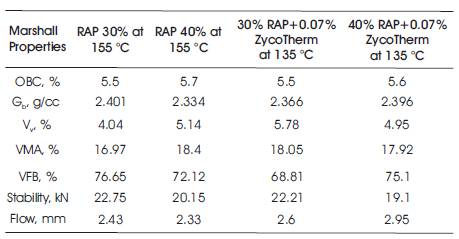
Table 11. Marshall Test Results for RAP Trail Mixes
Table 12 shows the result of performance characteristics from which 30% and 40% partial RAP replacement in WMA gives good results at 135o C compared with HMA. From cost analysis, 30% RAP WMA is the optimum blend.
For 10% stress level of HMA, the number of cycles obtained is 2461, 8125, 7050, 4186, 3401, 8356, and 7421 cycles for HMA, WMA with 0.07% ZycoTherm and 0.1% ZycoTherm, 30% RAP HMA, 40% RAP HMA, 30% RAP WMA, and 40% RAP WMA of 0.07% ZycoTherm.
From the laboratory studies, the following conclusions can be drawn: